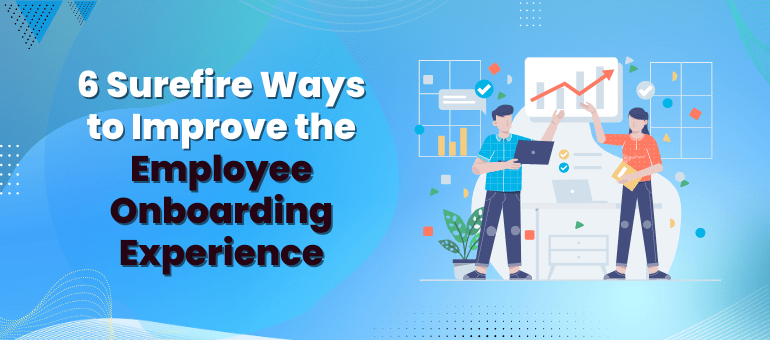The onboarding process is crucial for organizations since it sets the stage for a new employee’s experience and can affect their potential for long-term success at your business. Your business can thrive if everything is done correctly, with each new hire increasing productivity and providing value. Conversely, poor execution can negatively impact the business’s culture and financial performance. The onboarding experience is very important for new joinees because the first impression is the lasting impression. Here we are listing six ways that will help you in improving the employees onboarding experience in the organization. Let’s have a look:
1. Develop a plan of action for success:
In an essay titled “Maximizing Developer Effectiveness,” the writers talk about how it’s important to focus on outcomes rather than outputs and how having engaged staff may help your business and its clients get the most out of it. When given the freedom to make their judgments, employees are not restricted to coding a requirement, designing by a specification, or creating features in response to requests from the sales team. Instead, they use creative problem-solving to develop original, affordable, scalable solutions. So, the organization should devise different methods that can help new employees to take care of their initial days and help them in settling in a new environment. The outcomes with different employees will be different and needs to be monitored closely to ensure every resource is productive and feels motivated every day.
2. Invite Newly hired personnel into the organization’s culture:
There is the possibility for increased diversity in the ideas and thinking produced when new employees are added to a startup. After all, the prior experience and knowledge of freshly hired staff can help to boost product quality, technical innovation, and operational efficacy. Beginning with the new hire orientation, every new employee should feel that they are a part of the company’s goal and can make a difference in its advancement immediately. The most crucial thing for leaders to accomplish is to set an example for the values they want their company to uphold through their interactions with others and the company’s management. We suggest fostering a culture of mindfulness and cognizance of other people’s feelings and actions.
3. Provide great experience to the new joinees on their first day:
Organizations must ensure that newly hired employees are greeted warmly, provided with all necessary materials, and clearly understand their duties and obligations on their first day of work. A new hire’s first day on the job is a significant occasion for several reasons, including that their computers will have access to the great majority of onboarding software and resources. They must be provided the contact information for all the responsible members so that they can reach out whenever needed.
4. Support self-service access:
It’s amazing how quickly a sizable amount of secret information may accumulate. Though completely understood during earlier sessions, ideas or tactics may have yet to be put on paper. If we do not take the time to document everything, the first few months of a new employee’s job may be challenging. HR automation software can help the HR department to seek details of every employee and help them with their respective manuals and instructions.
5. Allow them to settle down:
For a developer to set up their environment, you can’t just give them installation instructions and hope they figure it out independently. In a perfect world, the developer’s environment would include everything they need to debug their code and push it to production. This would imply that the required parts would either be pre-loaded or deployable with a few straightforward commands. Before deploying the code to production, the developer should be able to build and test it in this environment. The first week is the perfect time for a manager or a colleague to collaborate with you on the initial deployment. By partnering up in this way, they can build relationships while still going through the awkwardness that a new employee goes through. The location of the personal environment may be the user’s laptop or a cloud environment. Another critical step in enhancing data security is keeping personal information off computers.
6. Reduce friction as much as possible during onboarding:
Any procedure that is excessively drawn out, unnecessarily bureaucratic, or wholly unneeded is called “onboarding friction.” A single team can only partially own onboarding if it is a monolithic process. You require real cooperation and support from your HRMS, recruiting department, IT department, learning and development department, leadership team, and team members regarding onboarding. This is because numerous individuals from various departments within the firm are involved. Coordination across diverse jobs provides a consistent message and experience while iteratively improving the process. This reduces conflict that could arise throughout the onboarding procedure.
Endnote
These six strategies only scratch the surface of what businesses can do to improve the onboarding processes they offer new hires. However, every organization is unique, confronting different challenges. For improving the onboarding experience for employees, the HR team needs to communicate to the new employees effectively and help them at every step to make the procedure streamlined and smooth.



